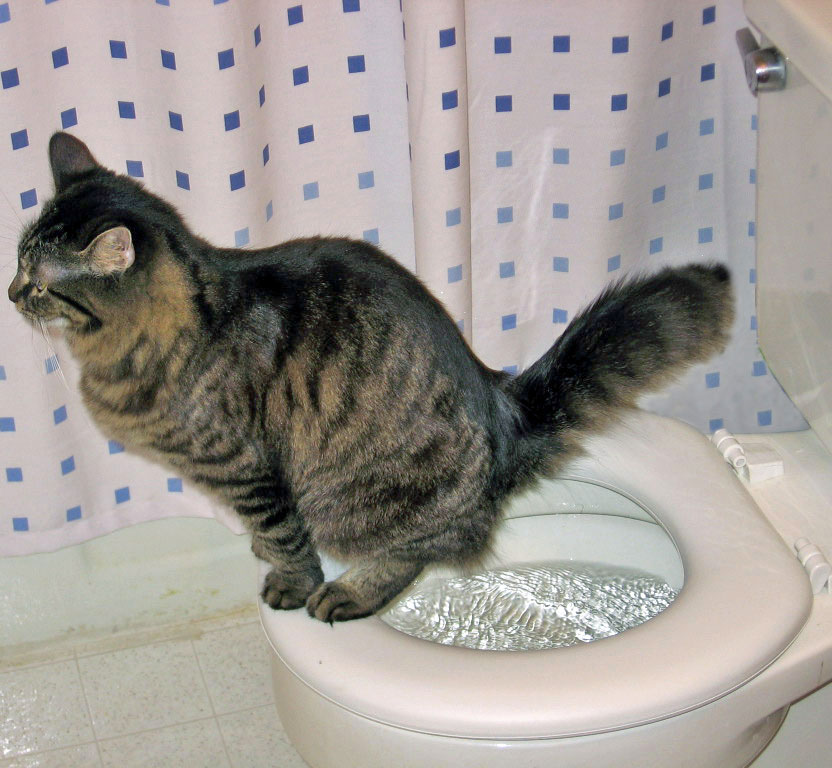The Risks of Disposing Cat Poop in Your Toilet - Preventive Measures
The Risks of Disposing Cat Poop in Your Toilet - Preventive Measures
Blog Article
Just how do you really feel on the subject of Don’t flush cat feces down the toilet?

Introduction
As cat owners, it's necessary to be mindful of exactly how we get rid of our feline good friends' waste. While it might appear hassle-free to purge feline poop down the commode, this technique can have detrimental effects for both the setting and human wellness.
Ecological Impact
Purging pet cat poop introduces damaging microorganisms and bloodsuckers right into the water system, presenting a substantial threat to water environments. These pollutants can negatively affect marine life and compromise water quality.
Health Risks
Along with ecological worries, purging feline waste can also pose wellness threats to people. Feline feces may contain Toxoplasma gondii, a parasite that can create toxoplasmosis-- a possibly serious disease, especially for pregnant females and people with damaged immune systems.
Alternatives to Flushing
Thankfully, there are safer and extra liable methods to get rid of cat poop. Take into consideration the adhering to alternatives:
1. Scoop and Dispose in Trash
One of the most usual technique of dealing with pet cat poop is to scoop it right into a naturally degradable bag and toss it in the garbage. Be sure to make use of a specialized litter inside story and throw away the waste promptly.
2. Use Biodegradable Litter
Opt for eco-friendly cat clutter made from materials such as corn or wheat. These clutters are environmentally friendly and can be securely gotten rid of in the trash.
3. Hide in the Yard
If you have a yard, take into consideration burying pet cat waste in a designated location away from veggie gardens and water resources. Be sure to dig deep adequate to prevent contamination of groundwater.
4. Mount a Pet Waste Disposal System
Invest in a pet dog waste disposal system especially designed for pet cat waste. These systems use enzymes to break down the waste, minimizing odor and environmental influence.
Conclusion
Liable animal possession extends beyond giving food and shelter-- it likewise involves appropriate waste monitoring. By refraining from flushing pet cat poop down the toilet and choosing alternate disposal approaches, we can minimize our environmental impact and protect human health and wellness.
Why Can’t I Flush Cat Poop?
It Spreads a Parasite
Cats are frequently infected with a parasite called toxoplasma gondii. The parasite causes an infection called toxoplasmosis. It is usually harmless to cats. The parasite only uses cat poop as a host for its eggs. Otherwise, the cat’s immune system usually keeps the infection at low enough levels to maintain its own health. But it does not stop the develop of eggs. These eggs are tiny and surprisingly tough. They may survive for a year before they begin to grow. But that’s the problem.
Our wastewater system is not designed to deal with toxoplasmosis eggs. Instead, most eggs will flush from your toilet into sewers and wastewater management plants. After the sewage is treated for many other harmful things in it, it is typically released into local rivers, lakes, or oceans. Here, the toxoplasmosis eggs can find new hosts, including starfish, crabs, otters, and many other wildlife. For many, this is a significant risk to their health. Toxoplasmosis can also end up infecting water sources that are important for agriculture, which means our deer, pigs, and sheep can get infected too.
Is There Risk to Humans?
There can be a risk to human life from flushing cat poop down the toilet. If you do so, the parasites from your cat’s poop can end up in shellfish, game animals, or livestock. If this meat is then served raw or undercooked, the people who eat it can get sick.
In fact, according to the CDC, 40 million people in the United States are infected with toxoplasma gondii. They get it from exposure to infected seafood, or from some kind of cat poop contamination, like drinking from a stream that is contaminated or touching anything that has come into contact with cat poop. That includes just cleaning a cat litter box.
Most people who get infected with these parasites will not develop any symptoms. However, for pregnant women or for those with compromised immune systems, the parasite can cause severe health problems.
How to Handle Cat Poop
The best way to handle cat poop is actually to clean the box more often. The eggs that the parasite sheds will not become active until one to five days after the cat poops. That means that if you clean daily, you’re much less likely to come into direct contact with infectious eggs.
That said, always dispose of cat poop in the garbage and not down the toilet. Wash your hands before and after you clean the litter box, and bring the bag of poop right outside to your garbage bins.
https://trenchlesssolutionsusa.com/why-cant-i-flush-cat-poop/

I have been very enthusiastic about How to Dispose of Cat Poop and Litter Without Plastic Bags and I am praying you enjoyed reading my post. Do you know about another individual who is enthusiastic about the niche? Please feel free to promote it. I recognize the value of reading our article about How to Dispose of Cat Poop and Litter Without Plastic Bags.
Schedule Estimate Report this page